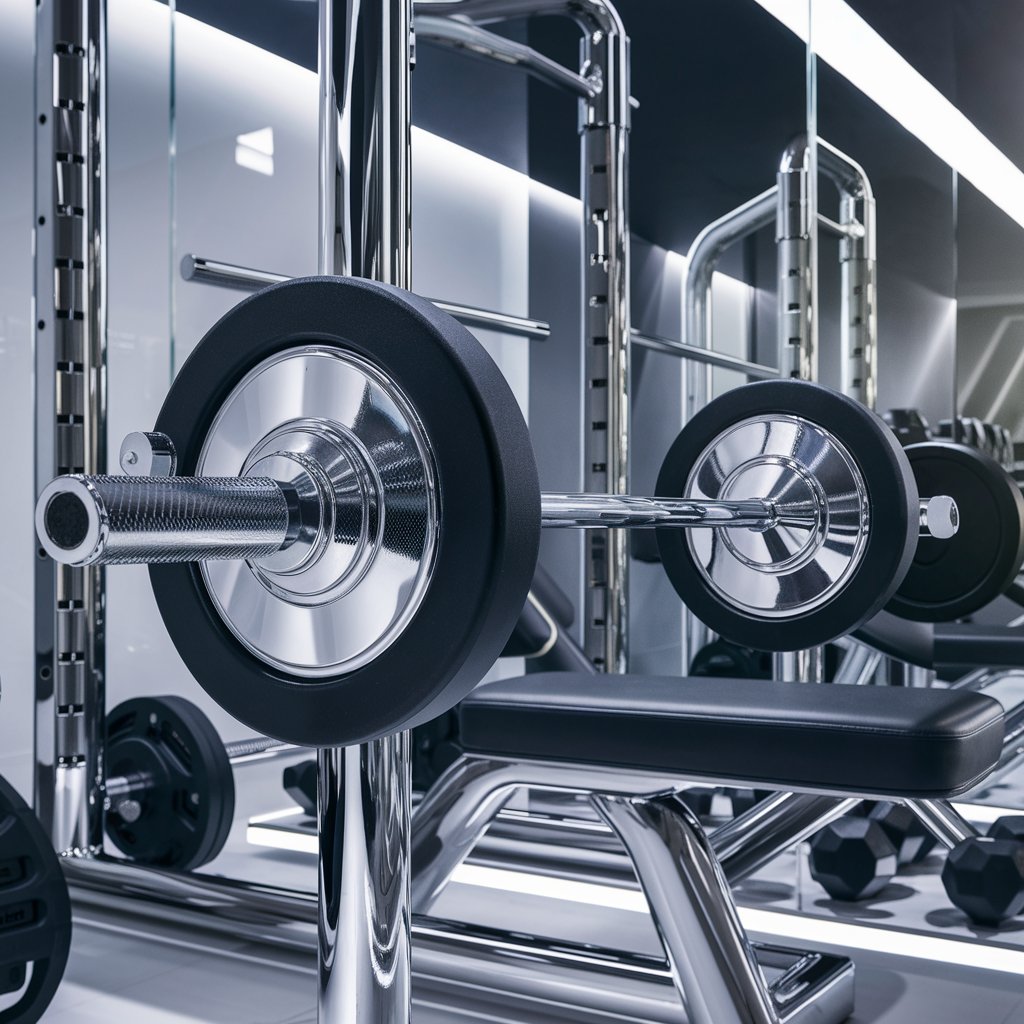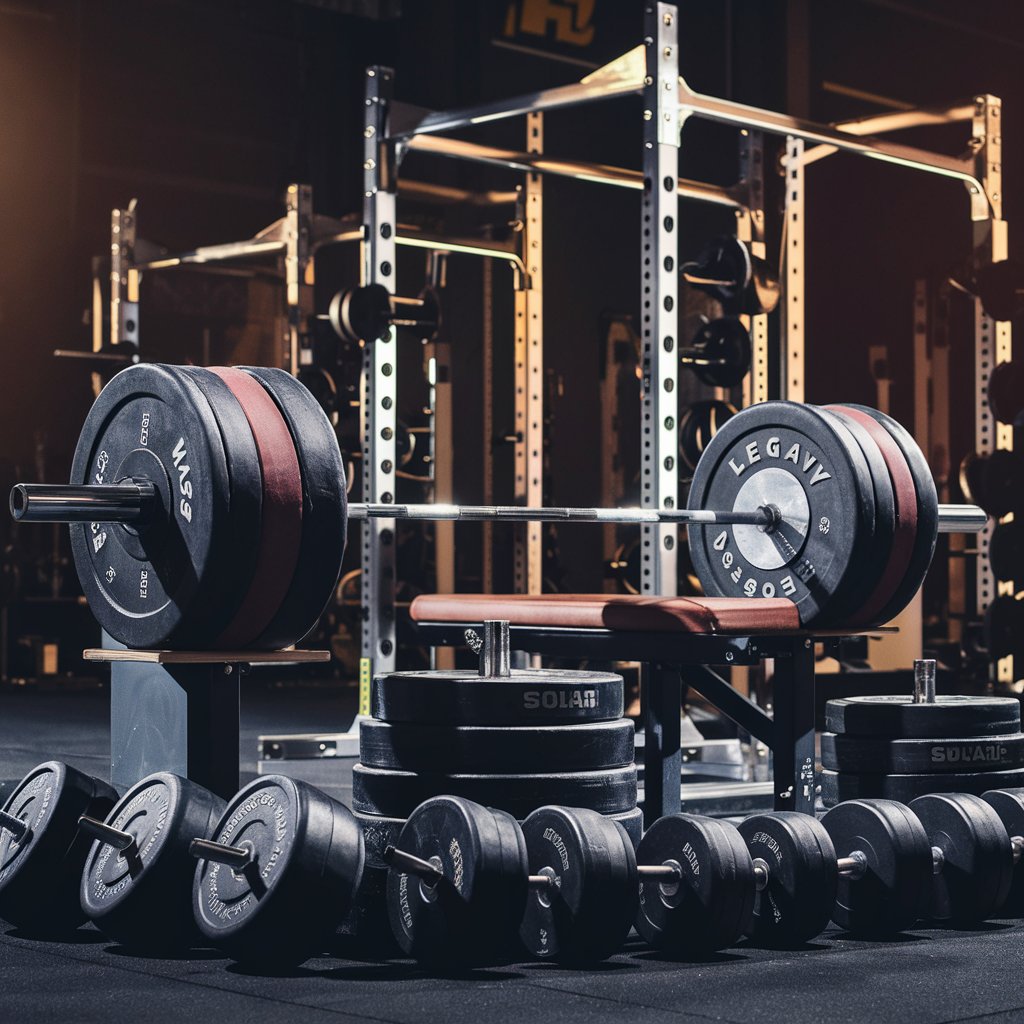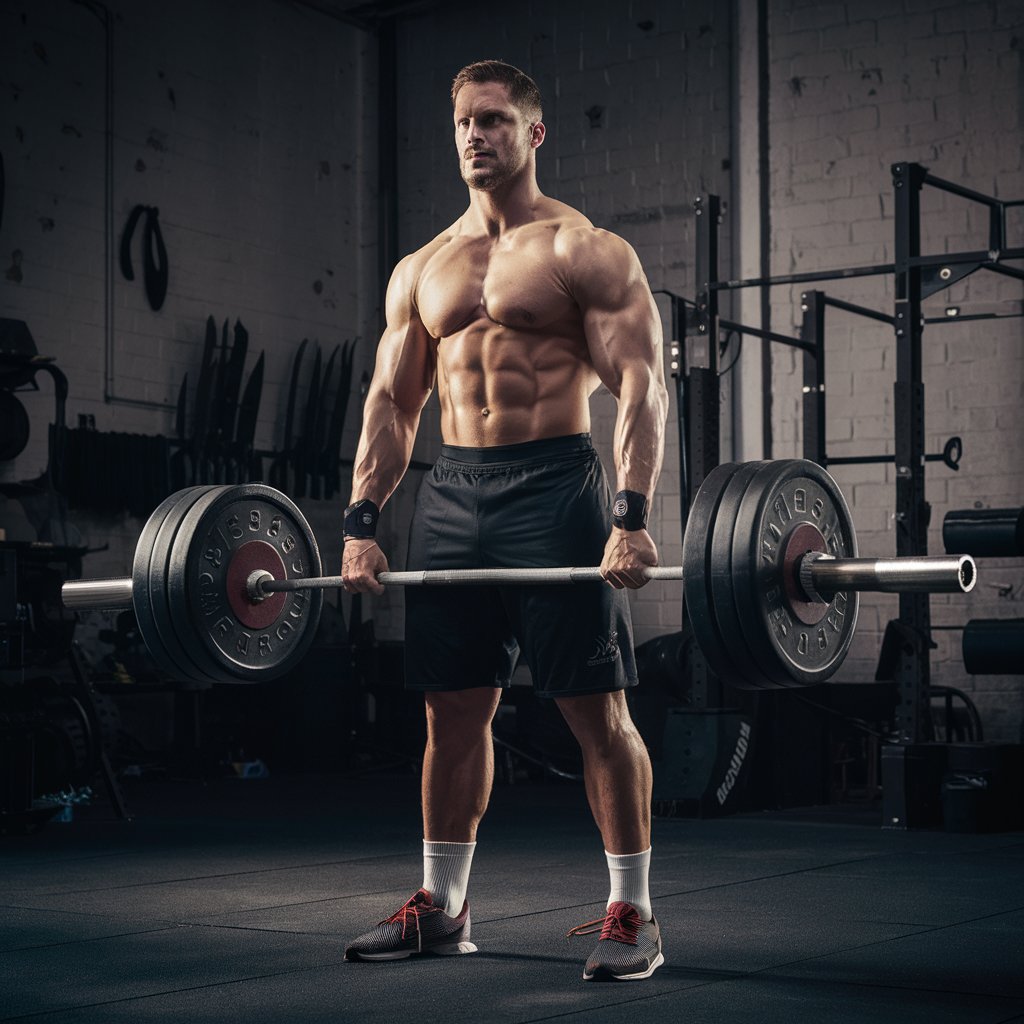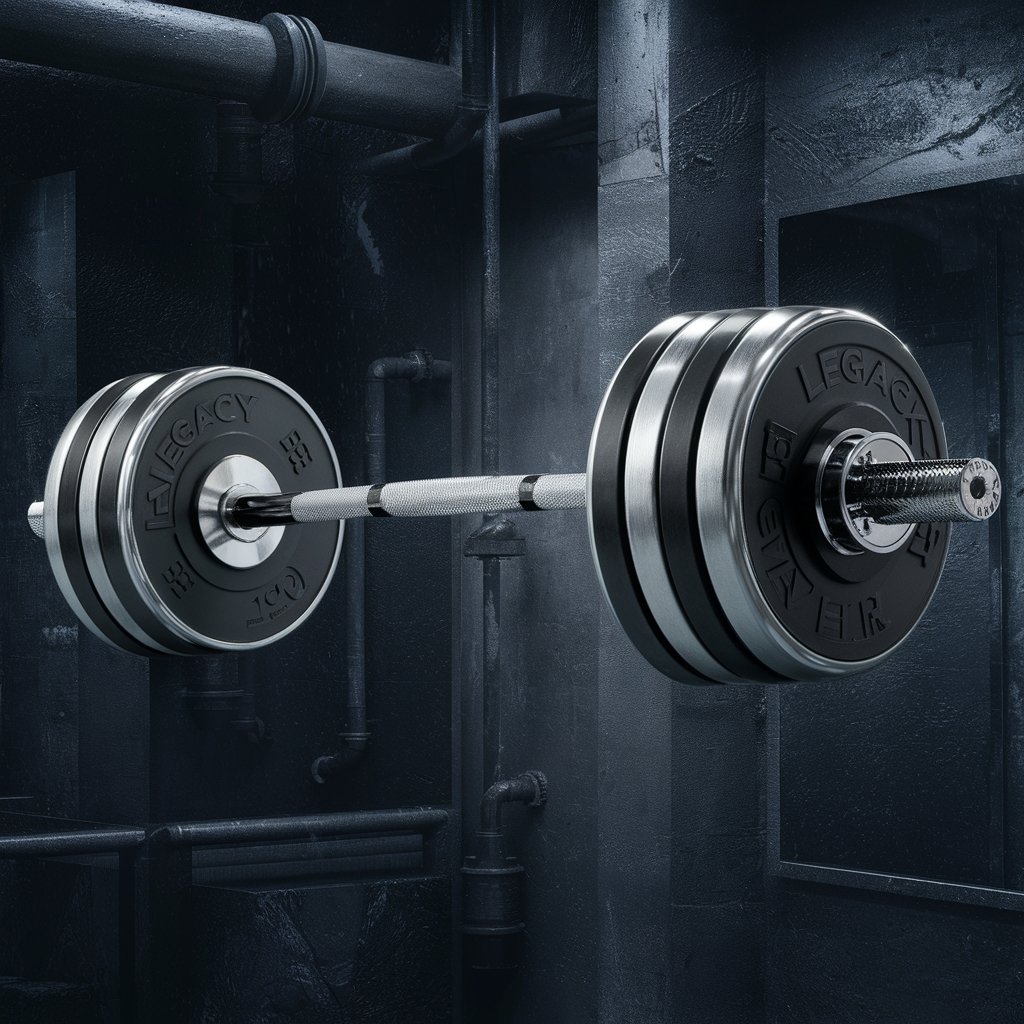The legacy barbell is also known as a multi-grip barbell. It is a versatile piece of equipment. You can find it in many gyms and home setups. The multi-grip barbell is different from traditional straight barbells. It has many hand placements or grips along its shaft. These different grip options allow for various exercises. They target different muscles. This makes it a valuable addition to any strength training routine.
One of the primary benefits of the multi-grip barbell is its versatility. It has an array of grip positions. They let users target muscles from different angles and with varied emphasis. For example, the neutral grip is gentler on the shoulders. It’s used in pressing movements like bench presses. Angled grips can engage different parts of the chest, shoulders, and arms. Also, the angled grips have ergonomic advantages. They often reduce strain on the wrists and elbows compared to a straight barbell.
The legacy barbell’s versatility extends beyond upper body exercises. It can move in many different ways because of its special design. These include rows, curls, and carries. They provide options for targeting the back, biceps, and even core muscles. This adaptability makes it good for users of all fitness levels and goals. It suits bodybuilders adding variety and beginners seeking efficient full-body workouts.
The old barbell’s multi-grip design offers versatility, safety, and comfort. It is a favored choice among fitness fans who want to maximize their strength training.
Design Features
A multi-grip barbell, also known as a Swiss bar or football bar, has a unique design. It is different from traditional straight barbells. Here’s a breakdown of its typical design features:

- Multi-grip barbells are usually as long as standard barbells. They are about 7 feet (213 cm) long. But, there might be variations depending on the manufacturer and intended use.
- The barbell shaft’s diameter is usually about 1.25 to 2 inches (32 to 50 mm). This is like standard barbells. This diameter provides a comfortable grip for most users.
- Weight: Multi-grip barbells come in various weights. These range from standard Olympic barbell weights. They are usually 45 pounds or 20 kilograms. There are also lighter options for specific training needs.
- Multi-grip barbells have many sets of handles or grips. The handles are at different angles along the barbell’s shaft. These handles can vary in design. They can have neutral, angled, or parallel grips. The different grip options allow for various hand positions during exercises. They target different muscle groups and fit individual comfort and preferences.
- Multi-grip barbells have knurling, like traditional barbells. The knurling is along the shaft to provide a better grip. The knurling’s intensity may vary between manufacturers. Some offer aggressive knurling for most grip. Others provide a smoother pattern for less aggressive grip.
- The multi-grip barbells have rotating sleeves. They are like those on standard Olympic barbells. The sleeves rotate. They let the weight plates rotate part from the barbell shaft during exercises. This reduces stress on the wrists and makes movements smoother. This is especially true for exercises like curls or presses.
The design of a multi-grip barbell is versatile and ergonomic. It offers users many grip options to target different muscles. It also ensures a comfy and secure grip during exercises.
Grip Options

- In a neutral grip, your palms face each other. Position your hands shoulder-width apart or closer. The “legacy barbell” grip is also known as the neutral grip. You position your palms facing each other, with your thumbs pointing upward. It’s common in exercises. For example, hammer curls, neutral grip bench press, and pull-ups. This grip is more ergonomic. It is also easier on the shoulders than the traditional overhand or underhand grips. It is good for people with shoulder issues or those looking for workout variety. This grip is popular for exercises like hammer curls. It’s also used for the neutral grip bench press and pull-ups. It one targets the brachialis, brachioradialis, and pronator teres muscles. It also works the chest, shoulders, and back to varying degrees. The amount they work depends on the exercise.
- Wide Grip: A wide grip refers to placing your hands wider than shoulder-width apart on the barbell. A wide grip on a barbell is a basic choice in strength training. It is often used in exercises like the wide-grip bench press. It is also used in wide-grip bent-over rows and wide-grip lat pulldowns. This grip variation changes how these movements work. It determines which muscles to use and which muscle groups to target. The wide-grip bench press emphasizes the chest muscles. It does this while reducing stress on the triceps. Wide-grip bent-over rows one target the upper back muscles. These include the latissimus dorsi and rhomboids, along with the biceps. Same, wide-grip lat pulldowns work the latissimus dorsi. They build the upper back. Many people use it for various goals. These include chest development, upper back strength, and lat muscle broadening. The wide grip is a versatile tool in resistance training. It allows for targeted muscle activation and varied training. This grip is common in exercises. These include wide-grip bench press, wide-grip bent-over rows, and wide-grip lat pulldowns. It emphasizes the outer chest, shoulders, and lats. This helps to build width and upper body strength.
- Narrow Grip: Unlike a wide grip, a narrow grip means bringing your hands closer together. They are the same shoulder-width apart or closer. Exercises like close-grip bench press, rows, and chin-ups use this grip. A narrow grip on the barbell changes how exercises work. It shifts the focus to different muscles than a wider grip does. For exercises like the bench press or rows, a narrow grip targets the triceps. It also targets the inner chest and middle back more. This can help people who want to strengthen those areas. It’s also good for those seeking variety in their workouts. But, it’s essential to keep proper form. Don’t overstrain any muscle group. This prevents injury and ensures balanced muscle growth. It focuses more on the triceps, inner chest, and middle back muscles. It helps to improve arm and upper body strength.
- An angled grip means holding the barbell with your hands at an angle. This is instead of a straight or neutral position. The angled grip is often called the neutral or hammer grip. It is very versatile for strength training. It lets the wrists and shoulders align more gas. This reduces strain and risk of injury during exercises. These include incline bench presses, rows, and overhead presses. This grip variation targets different muscle groups and can also improve wrist stability. It’s a great tool for varying your workouts. It lets you target muscles from many angles. Athletes often use this grip in exercises. These exercises include incline bench press, incline rows, and overhead presses. The angle can target specific areas of the chest, shoulders, and back. It adds variety to muscle use and stimulates different muscle fibers.
- Pronated Grip: Also known as overhand grip, in a pronated grip, your palms face away from you. The pronated grip is also called an overhand grip. It is common in exercises like barbell rows, deadlifts, and pull-ups. It involves gripping the bar with your palms facing down and your thumbs wrapped around the bar. This grip engages muscles in your back, arms, and shoulders all. Athletes compare this grip to other grips like the underhand or mixed grip. It’s often favored for its simplicity and effectiveness in targeting various muscle groups. This grip is usually used in exercises like barbell rows, deadlifts, and pull-ups. It targets the back muscles. These include the latissimus dorsi, rhomboids, and traps. It also works the forearms and biceps a bit.
Each grip option has its own advantages and challenges. They allow a diverse range of exercises and useful target specific muscle groups. Using a variety of grips in your workouts can ensure balanced muscle growth. It can also lead to total strength gains.
Materials and Durability
Both home gyms and commercial fitness centers use multi-grip barbells. They are same made from high-quality materials, like steel or stainless steel. This ensures durability and longevity, especially under heavy loads and frequent use.
Steel is robust and strong. It is a favored material for making barbells. High-quality steel alloys, like carbon or gear steel, are often used. They are tough and can handle immense pressure. These alloys have great tensile strength. This makes them resistant to bending or warping, even under heavy loads.
Stainless steel barbells are a top choice for commercial gyms and fitness centers. They are durable, resist corrosion, and are easy to maintain. They offer a sleek and professional look while also being level functional. Also, stainless steel resists rust. This is great for places where equipment may come into contact with sweat and moisture. It’s a material that not only lasts. It also helps keep high cleanliness standards, crucial in public fitness spaces. Stainless steel is also popular. This is especially true in commercial settings. In these places, hygiene and corrosion resistance are key. Stainless steel barbells are very durable. They need little maintenance. This makes them ideal for busy fitness centers. In these centers, equipment sees constant use and exposure to sweat and moisture. Additionally, stainless steel resists corrosion. This ensures that the barbell keeps its integrity even in humid places. It prevents rust and extends its lifespan.
Manufacturers use advanced techniques to create multi-grip barbells. These include precision machining and heat treatment. These techniques improve their durability and performance. These processes maintain the barbells’ strength. They do so even when the barbells face tough workouts and heavy loads.
Both home gyms and commercial fitness centers use multi-grip barbells. They face diverse environments and usage patterns. So, durability is very important for them. Investing in a steel barbell ensures it is high-quality. It will withstand tough workouts. It will also work well for a long time, making it a valuable asset for any athlete.
Exercise Versatility
A multi-grip barbell is also called a Swiss bar or football bar. It is a versatile piece of equipment. It allows for various exercises that target different muscle groups. The multi-grip barbell has different grip options. They let users vary their grip width and hand position. This targets muscles from different angles. Here are some examples of exercises you can do with a multi-grip barbell. They show how the exercises target different muscle groups.

- The bench press can use a multi-grip barbell. You can use a narrow, neutral, or wide grip. Each grip variation places emphasis on different areas of the chest and triceps. A narrow grip targets the triceps more, while a wide grip emphasizes the outer part of the chest.
- Rows: Rows are excellent for targeting the back muscles. With a multi-grip barbell, you can perform rows with an overhand, underhand, or neutral grip. Each grip works different back muscles. These include the latissimus dorsi, rhomboids, and traps.
- Curls: Bicep curls can also be with a multi-grip barbell. By using different grip options, you can target various parts of the biceps. For example, a narrow grip emphasizes the outer biceps. A wide grip emphasizes the inner biceps.
- Overhead Press: The overhead press main targets the shoulders and triceps. With a multi-grip barbell, you can do overhead presses with a neutral grip. This may feel more comfortable for some people and work the triceps more.
- Shrugs target the trapezius muscles. These muscles lift and steady the shoulders. You can use a multi-grip barbell to do shrugs. You can use a narrow, neutral, or wide grip to target different parts of the trapezius muscles.
These exercises use various grip options. They let users target different muscle groups. They can stimulate muscle growth from many angles. Also, the neutral grip options from the multi-grip barbell can help. They can help people with wrist or shoulder issues. They may reduce strain on these joints more than traditional straight barbells.
User Experience
Users of the legacy multi-grip barbell logic praise its comfort and ergonomic design. Many users report that the barbell’s grip options are different. They allow for a more natural and comfy grip. They use these grips during exercises like bench press, overhead press, and rows. The many grip positions reduce strain on the wrists and shoulders. This leads to a more comfortable lifting experience.
In terms of ergonomics, users like the barbell’s design. It reduces stress on joints and muscles. This allows for smoother motion during exercises. This is especially helpful for people with existing joint issues or mobility limits. It lets them do exercises more and with less risk of injury.
Total satisfaction with the legacy multi-grip barbell is high among users. Many reviewers note this gear improved their lifting and strength gains. Users like the barbell’s versatility. It lets them target various muscle groups and vary their training well.

Testimonials and reviews often highlight the following benefits. They praise using the old multi-grip barbell for:
- Improved Comfort: Users like the grip options. They ease discomfort and strain during exercises. This allows for longer, more effective workouts.
- The barbell’s design promotes a natural range of motion. It reduces the risk of injury and allows for more efficient muscle engagement.
- Users value versatility. They can target different muscles. They can vary their workouts with the barbell’s many grip options.
- The multi-grip barbell has improved their routines. Many users have seen noticeable strength and muscle gains.
In general, users say that the old multi-grip barbell is great. It’s very effective for strength training at all levels.
Conclusion
Owning a multi-grip barbell is a game-changer for your workout routine. It offers many advantages that can take your training to the next level. First, a multi-grip barbell provides unparalleled exercise variety. It has many grip options. You can target muscles from various angles. This leads to well-rounded muscle development and prevents progress plateaus.
Also, the multi-grip barbell has unique grips. They engage muscles in ways that straight barbells cannot. This extra muscle use builds strength. It also boosts stability and coordination. These improvements lead to better athletic performance.
A multi-grip barbell has a key benefit. It can make workouts more efficient. It allows you to do many exercises with only one piece of equipment. This makes your training efficient and saves you time. You may be focusing on upper body, lower body, or core exercises. A multi-grip barbell can help with all these.
Consider these advantages. Adding a multi-grip barbell to your home gym or fitness facility is a no-brainer. It will diversify your workouts and target muscles in new ways. It will also save time, leading to faster and more noticeable results. Improve your training today. Do it by buying a multi-grip barbell. It will unlock new fitness potential.

